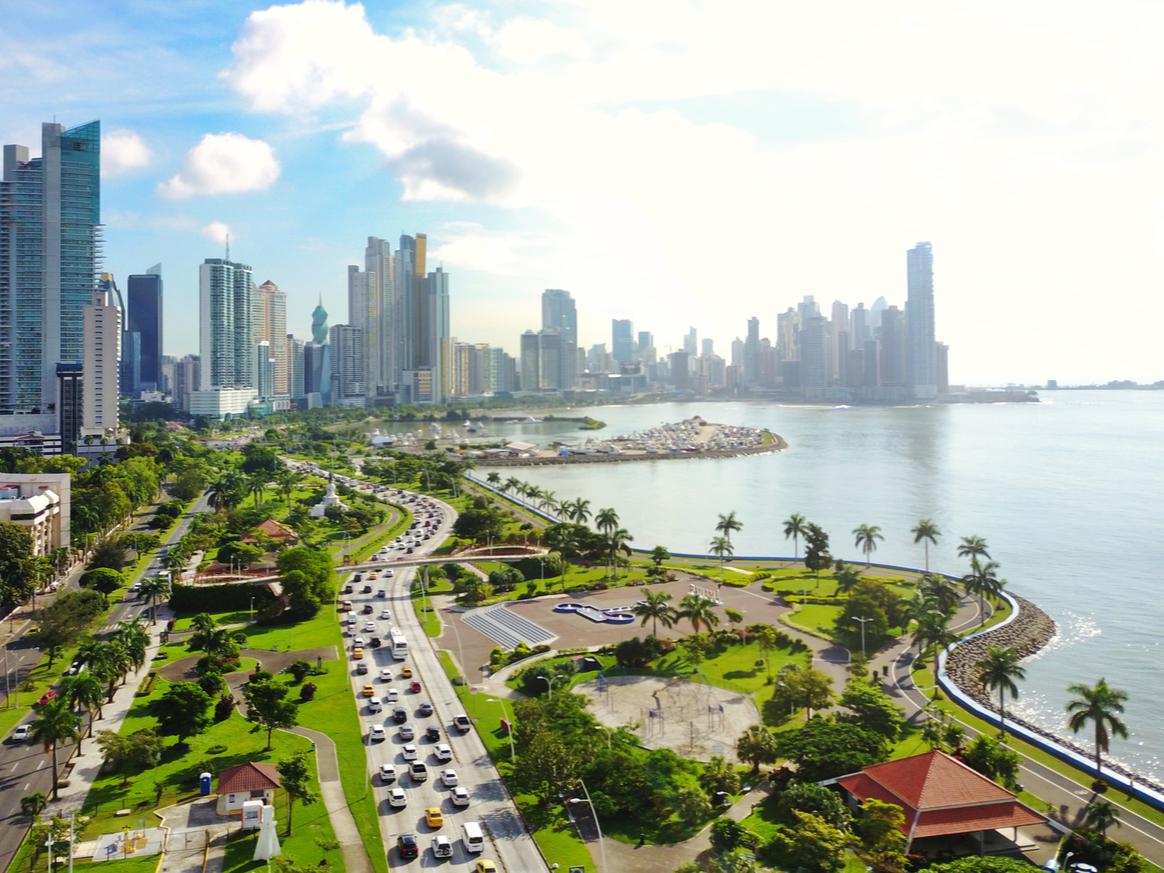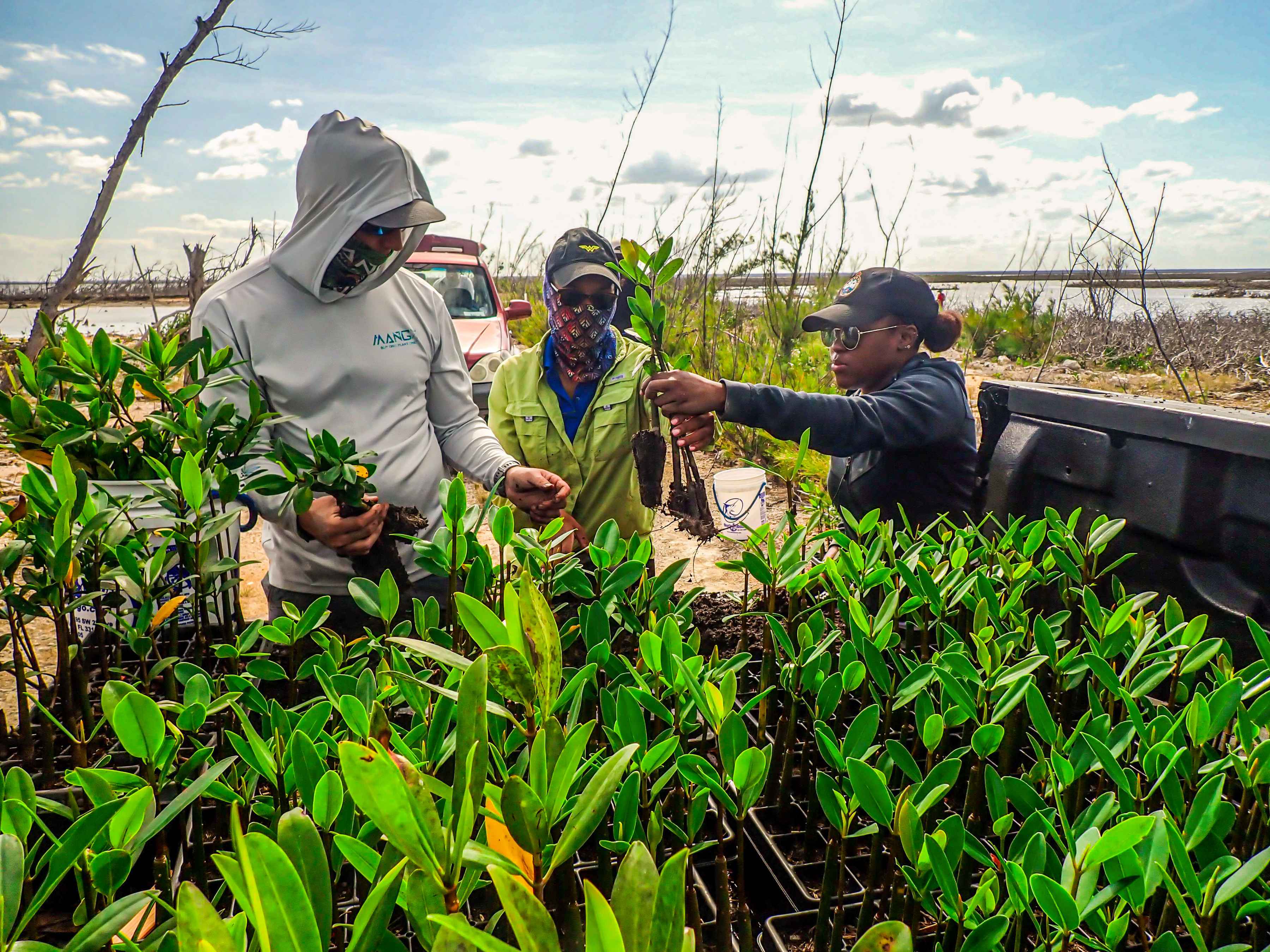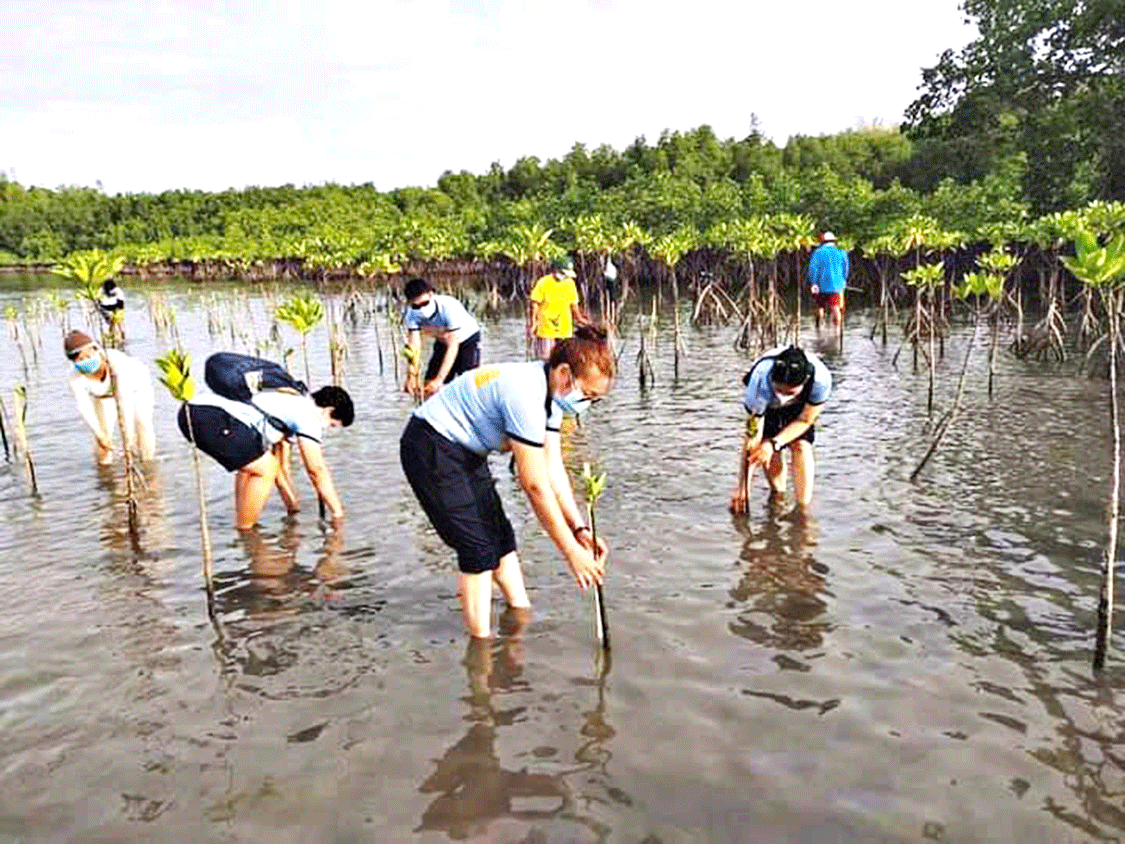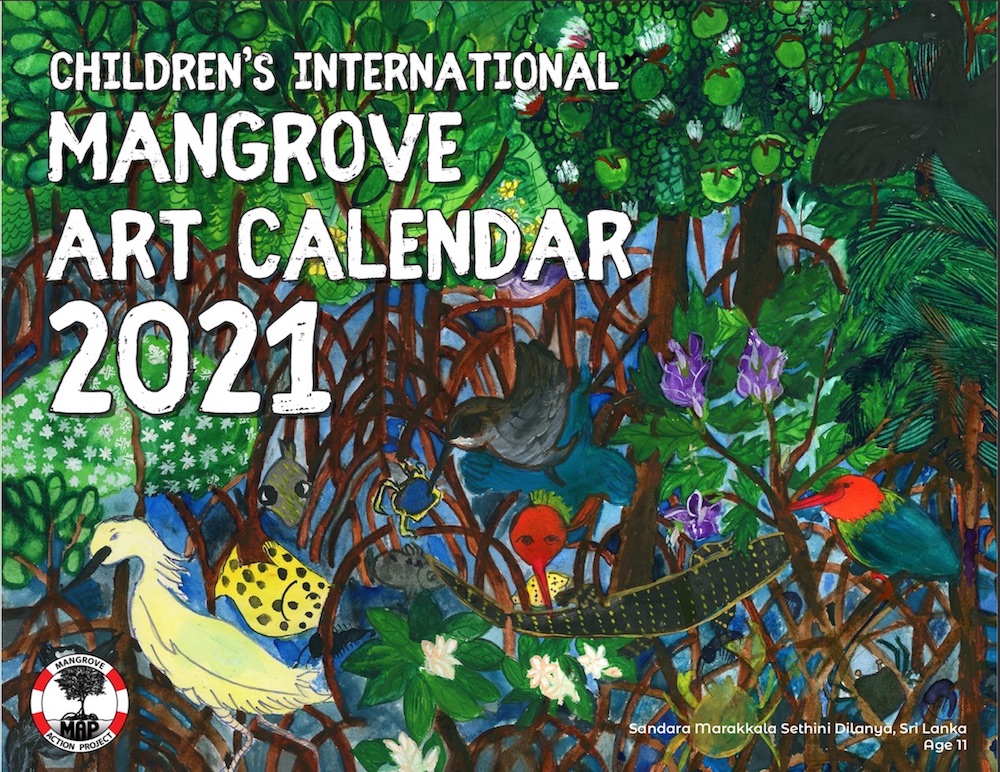MAP and US Forest Service join together to conduct an online workshop for Pacific Island Countries

USA – As Covid-19 has grounded all face-to-face teaching activity, Mangrove Action Project (MAP) has joined together this time with the US Forest Service (USFS) International Programs to run MAP’s second online ‘community-based ecological mangrove restoration’ workshop. Running over six weeks, this workshop is designed to help the implementation of the USFS’s ‘Pacific Islands Forest Restoration Initiative’ (PIFRI) for 47 participants across Palau, Federated States of Micronesia, Solomon Islands, Vanuatu, Marshall Islands, Fiji and Samoa. The project is funded by the US State Department’s Bureau of Oceans International Environmental and Scientific Affairs. The training team consists of Dr Dominic Wodehouse, Executive Director and Jim Enright, CBEMR trainer from MAP, and Dr Richard MacKenzie, Nico Stoehr and Allison Saracina from USFS, supported by Wolf Forstreuter, USFS’s in-country consultant. READ MORE GLOBAL Mangrove: a threatened, living territory

GLOBAL – At the end of the 1990s, FAO reported the loss of 50% of this ecosystem, worldwide. The Latin American continent is undoubtedly the most affected by the destruction of the mangrove ecosystem. In the 1930s, mangrove wood was in great demand for piles and tannins, and since the end of the 1970s the main causes have been the implementation and expansion of industrial shrimp aquaculture, followed by large-scale tourism development and housing construction. The discharge of pollutants from upland areas is another threat to their conservation. The loss of food and jobs for local communities in coastal areas, which are negative consequences of mangrove destruction, are not compensated by the industrial activities that replace this ecosystem. The impoverished and precarious conditions faced by small-scale coastal fishing and harvesting communities are evident: lacking basic services, access to health and education. In the context of the COVID19 pandemic, the conditions of impoverishment of the harvesting and fishing communities in marine-coastal territories have been exposed. This historical and structural impoverishment affects all aspects of the lives of these communities and is further intensified by the restrictions imposed by governments, almost worldwide, such as confinement measures, prohibition of mobilisation, closure of workplaces. In addition to this, governments usually pay little or no attention to the health of the local people, and fail to take compensatory measures to alleviate their losses. READ MORE AFRICA EU funded mangrove management project – Ghana and eight other West Africa Nations benefit

GHANA – An integrated programme to protect the biodiversity of mangroves and other fragile ecosystems in West Africa to enhance their resilience to climate change in nine West African countries is being implemented The four-year project (2019-2023) on the “Management of Mangrove Forests from Senegal to Benin (PAPBio C1 Mangroves), seeks to protect mangroves in Ghana, Senegal,The Gambia, Sierra Leone, Benin, Guinea Bissau, Liberia, Togo and Benin. It was signed in July 2019 with €9.9 million funding from the European Union (EU) and is jointly implemented by the International Union for Conservation of Nature (IUCN),the Wetlands International Africa and the 5Deltas collective. The four priority conservation landscapes include Mono Volta (Ghana, Benin and Togo), Grand Saloum (Senegal and The Gambia), Basse Casamance (Senegal, Guinea Bissau and Guinea) and Grand Mano (Sierra Leone and Liberia). READ MORE AMERICAS Urban planning and nature-based solutions, keys for reducing flood risk in Panama

PANAMA – Panama City has tripled in size during the last 25 years as a result of rapid and unplanned urbanization. Its geographic location, combined with a lack of adequate land use planning, deficient drainage systems, and weak local governance, all make it a city highly exposed and vulnerable to the impact of floods and rising sea levels. This scenario implies a major challenge for the socio-economic development and resilience of this city of two million inhabitants. Urban expansion, characterized by landfilling and construction in mangrove areas, has aggravated the degradation and loss of the Panama Bay RAMSAR site. Mangroves play a key role in reducing floods and protecting coastlines against waves, rising sea levels, and coastal erosion. In just fifteen years, between 2000 and 2015, mangrove coverage in the Tocumen basin has been reduced by 60% . These degradation processes have caused a significant rise in the frequency and impact of floods in the watersheds and coastal areas, generating the risk conditions that have already been evidenced in other basins of the city, such as the Juan Díaz river basin. READ MORE Massive mangrove restoration projects aims to speed Bahamas recovery

BAHAMAS – Hurricane Dorian stalled over the Bahamas in early September of 2019, thrashing the islands of Great Abaco and Grand Bahama with unrelenting winds, rain and storm surge. The devastation the storm inflicted on both islands—destroying airports, sweeping away hotels and fishing lodges, and leveling entire neighborhoods—was catastrophic and absolute. But impacts to the Bahamas from Dorian weren’t limited to its human toll. The storm also caused extensive damage to the natural environments of the hardest hit Bahamian islands. Perhaps most notable was the damage done to the ecologically crucial mangrove forests that ring the Bahamas’ islands and cays. A recent scientific survey revealed that Dorian damaged or destroyed nearly 74 percent of Grand Bahama’s and 40 percent of Abaco’s mangroves. In order to combat this damage, and speed recovery, a new mangrove restoration project is seeking to transplant as many as 100,000 mangrove seedlings to the areas hardest hit by Hurricane Dorian. READ MORE ASIA ‘Hungry’ palm oil, pulpwood firms behind Indonesia land-grab

INDONESIA – Conflicts over land flared up across Indonesia in 2020, as Indigenous and rural communities tried to hold off pulpwood, palm oil and logging companies ramping up their expansion during the COVID-19 pandemic. The flurry of activity came despite the economic slowdown wrought by the government’s response to the pandemic, and suggests the companies were taking advantage of the situation to lay claim to disputed territory, according to the Consortium for Agrarian Reform (KPA), an NGO that advocates for rural land rights. In its year-end report, the KPA recorded 138 land conflicts between April and September 2020, up from 133 in the same period in 2019. The 2019 cases occurred during a strong economy, when GDP grew by 5.01%, while the 2020 cases were recorded during Indonesia’s first recession in two decades, when the economy shrank by 4.4%. While the increase in the number of conflicts is small, it’s highly unusual, given that such cases decline during a weak economy as companies put their investment and expansion plans on hold, said KPA secretary-general Dewi Kartika. READ MORE Mangrove forests store more carbon when they’re more diverse

CHINA – Mangrove forests with greater species diversity can store more carbon, according to new research published in the British Ecological Society journal Functional Ecology. Researchers studying mangrove forests in Hainan Island, China, have found that species diversity in mangrove forests enhances both biomass production (the quantity of organic matter) and soil carbon storage. The findings highlight the impotence of conserving mangrove biodiversity as a nature-based solution to mitigate climate change. The East side of the island was found to have the highest mangrove biomass, diversity and carbon storage, with a mean of 537 tonnes of carbon per hectare (Mg C ha-1). This compared to a mean of 328 Mg C ha-1 across the entire island, and the world mangrove forest mean of 386Mg C ha-1. This is the first study based on an intensive field study to verify the positive effect of biodiversity on mangrove biomass and carbon storage. Mangroves grow in tropical regions and are one of the most carbon rich ecosystems on the planet. There are over 70 different species worldwide with 27 of these in China and 26 in the areas studied by the researchers. READ MORE Maldives seeks Cusat’s help to save mangroves

MALDIVES – KOCHI: Worried over large-scale ‘die-off’ of mangrove species in several islands of, the environment ministry of the island nation has sought the scientific and technical support from marine biologists of Cochin university of science and technology (Cusat). The phenomenon which was noticed in March 2020 on11 islands, including Sh. Feydhoo, H.A. Uligan and G.Dh. Hoadedhoo, has worried Maldives as the mangroves serve as a natural protection against sea-level rise, tsunamis and sea erosion. “The Maldivian government worked with the Indian embassy there to reach out to institutions in India and when they approached us, we immediately agreed to do the study. Because of Covid-19, we couldn’t go there and instead, they have sent us samples for analysis here in our laboratory,” said Prof S Bijoy Nandan, head, department of marine biology, microbiology & biochemistry. According to the environmental protection agency (EPA) in Male, the first case was reported from H A Kelaa and H. Dh. Neykurendhoo. Maldives is a home to 15 mangrove species including the rare Bruguiera hainesii, one of the critically endangered species as per the IUCN Red List. READ MORE Before the coup, Myanmar’s stunning biodiversity had a chance. Now it is not so certain

MYANMAR – The military takeover in Myanmar this month is a serious setback for democratic reform. But the coup also threatens to permanently damage the Southeast Asian nation’s precious environment, and harm the people who rely on it. Myanmar is renowned as a biodiversity hotspot, and supports more than 230 globally threatened species. But the nation’s natural resources have been heavily exploited in pursuit of economic growth. In particular, logging, hunting, and fishing have created serious environmental problems. The transition to civilian rule in 2011 meant conservation efforts could be deployed. It allowed researchers and practitioners such as ourselves to work in Myanmar, from the village to government level, to help manage protected areas. But the coup means this vital work may not continue. READ MORE Into a magical world–the vast Pichavaram mangroves of Tamil Nadu

INDIA -Visiting Tamil Nadu’s Pichavaram mangroves is like visiting a different world, literally. Vast expanses of big and small canals and a few islands amaze the visitors here. Silence pervades this region, barring the sound paddles, presence of chirpy birds, and gushing waters of the sea at a distance. Pichavaram mangroves, being the largest in the world, are home to 200 species of birds as well as seaweed, prawns, crabs, fish, oysters, turtles and otters. It is believed that the mangroves were originally called Thillai Vana as the rishis used to live here with their wives. Once, Lord Shiva had graced this region and performed Ananda Tandav (blissful cosmic dance) to gladden the rishis. A few popular South Indian movies have also been shot at this location. READ MORE 200 mangrove propagules planted in Nueva Valencia

PHILIPPINES – Some 200 mangrove propagules were planted along the coast of Barangay La Paz here on Feb. 20 by personnel of the municipal government and police station. Mangrove planting is a quarterly activity of the local government. Mangrove forests are extremely productive ecosystems that provide numerous goods and services both to the marine environment and people. They are home to a large variety of fish, crab, shrimp, and mollusk species. These fisheries form an essential source of food for coastal communities. The dense root systems of mangrove forests trap sediments flowing down rivers and off the land. This helps stabilizes the coastline and prevents erosion from waves and storms. In areas where mangroves have been cleared, coastal damage from typhoons is much more severe. READ MORE Sea water supply cut off to kill mangroves

INDIA – The mangroves in Dahisar Creak, which have become fragile due to constant attacks from the land mafia, are facing a fresh threat to their existence. Harish Pandey, an environment activist working with New Link Road Residents Forum, has written to the Mangrove Protection Cell, BMC and local police that major environmental violations such as cutting of mangroves, building of bunds and blocking of sea water have been witnessed in the mangroves of Dahisar West on Government Land. The access is only from the sea and boats, he said. Pandey has asked the mangrove protection cell to immediately take corrective measures and book the culprits. READ MORE Maharashtra Government To Take Action Against People Axing Mangrove Forests

INDIA – In recent developments, Shiv Sena leader instructed the concerned authorities to take immediate steps to stop the axing of Kandal forest as well as the practice of damaging the Kandal forest by dumping debris.He further urged the authorities to create awareness among the people about the importance of Kandalvans in terms of environmental conservation i.e. measures that should be taken to build protective walls or fences in the forest, install CCTV etc. Moreover, the Shiv Sena leader also directed authorities to take action against the developers and vehicles involved in dumping debris in these mangrove forests. Moreover, two environmental groups have alleged that large tracts of mangroves are being systematically destroyed across Mumbai and nearby areas due to slow progress in handing over the coastal vegetation to the state’s forest department. Meanwhile, the NGO administration stated that despite the state government asking district collectors, CIDCO and JNPT to transfer mangroves under their control to the forest department, things are not moving in the right direction. READ MORE Like this newsletter?
Pease consider donating to MAP to keep it going.
Giving could never be easier  | 2021
CHILDREN’S ART CALENDAR BUY YOURS!

ACTION ALERTS Lawsuit Against Genetically Engineered Tree Solidarity Group – SIGN PETITION Tell the Japan International Cooperation Agency not to fund polluting coal – TAKE ACTION Please SIGN: keep plantations out of orangutan habitat!
TAKE ACTIONUnilever: stop destroying mangroves for convenience food! SIGN OUR PETITION
Stop plundering the oceans for industrial aquaculture! SIGN THE PETITION
Like this newsletter? Pease consider donating to MAP to keep it going. Giving could never be easier
Please see our newest video: “Restoring The Natural Mangrove Forest”
WATCH VIDEO 
Restoring The Natural Mangrove Forest
Watch movie 
Community Based Ecological Mangrove Restoration in Rufiji Delta VIEW VIDEO Video: Mangroves for the Future – A look bacK. As the latest phase of Mangroves for the Future (MFF) draws to a close, this video highlights some of the project’s most successful initiatives – from local women supporting national park management in Viet Nam to an island in the Maldives that has become a model for waste management, and everything in between. View Here WANT TO GET INVOLVED?
Follow and Join MAP!    
Like this newsletter? Pease consider donating to MAP to keep it going. Giving could never be easier 

Singing for the Sundarbans WATCH HERE Entrevista con Monica Quarto del Mangrove Action Project (Spanish language) Oye Aqui
VOLUNTEER OPPORTUNITY 
MANGROVE ISSUES Want to learn more about mangroves?
Our short presentation will give you a better understanding of the issues we are working to solve. WATCH PRESENTATION What is CBEMR? Download MAP’s 2 page CBEMR Information Sheet containing links to all MAP’s CBEMR resources – CLICK HERE
View MAP’s uploaded Videos at
MAP Video Gallery Question Your Shrimp Consumer/Markets Campaign!
WATCH VIDEO Mangroves: Guidebook to Malaysia – Click Here SHARE MAP’S VISION
CLICK HERE to watch short introductory video. Together we can work “at the roots of the sea”. Our short documentary, Reducing the Risk of Disaster through Nature-Based Solutions : Mangroves

Marvellous Mangroves Curriculum The Marvellous Mangroves Curriculum begins with a simple philosophy – getting future generations to not only learn about, but understand the importance of mangrove forests. VISIT 
The award-winning Marvellous Mangroves (MM) curriculum educates children on the importance of mangroves and their ecological functions, teaching them about modern challenges and mechanisms for sustainability. VIEW VIDEO Marvellous Mangroves Curriculum in Bangladesh – WATCH VIDEO
MARVELLOUS MANGROVES IN BRAZIL
En Portuges 
Marvellous Mangroves – A Curriculum-Based Teachers Guide.
Like this newsletter? Pease consider donating to MAP to keep it going. Giving could never be easier 
“Question Your Shrimp” Campaign Question Your Shrimp – is it really sustainable? Sign the Petition
Note to Our Readers: We strive to keep active links in our newsletter. However, due to circumstances beyond our control, occasionally links to stories may become broken. If you find a link to a story is not functioning, please cut and paste the headline into your browser search bar. In most cases you should be able to locate the original story.
Not yet a MAP News subscriber?
Click here to subscribe. 
|





























